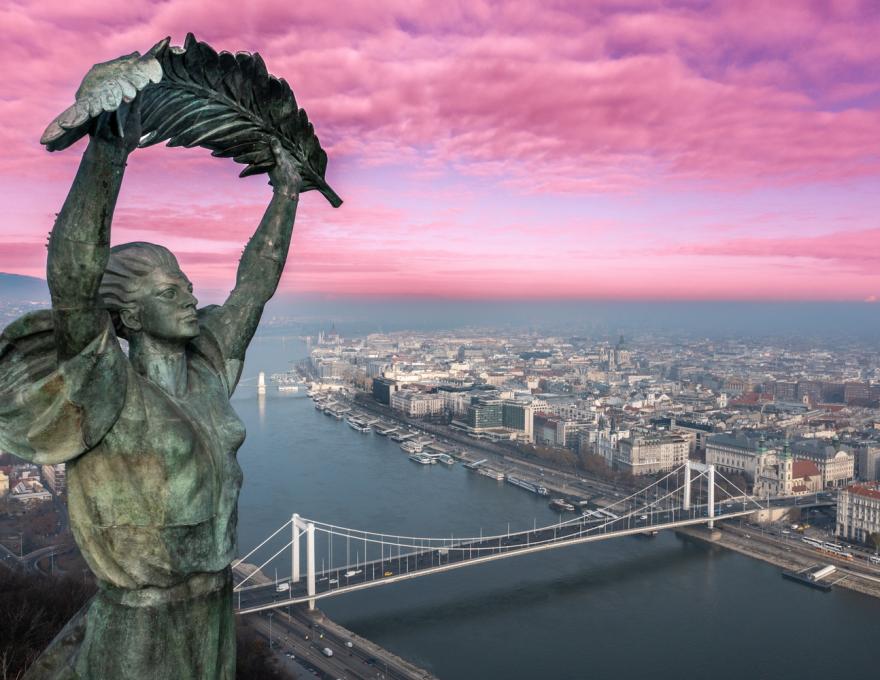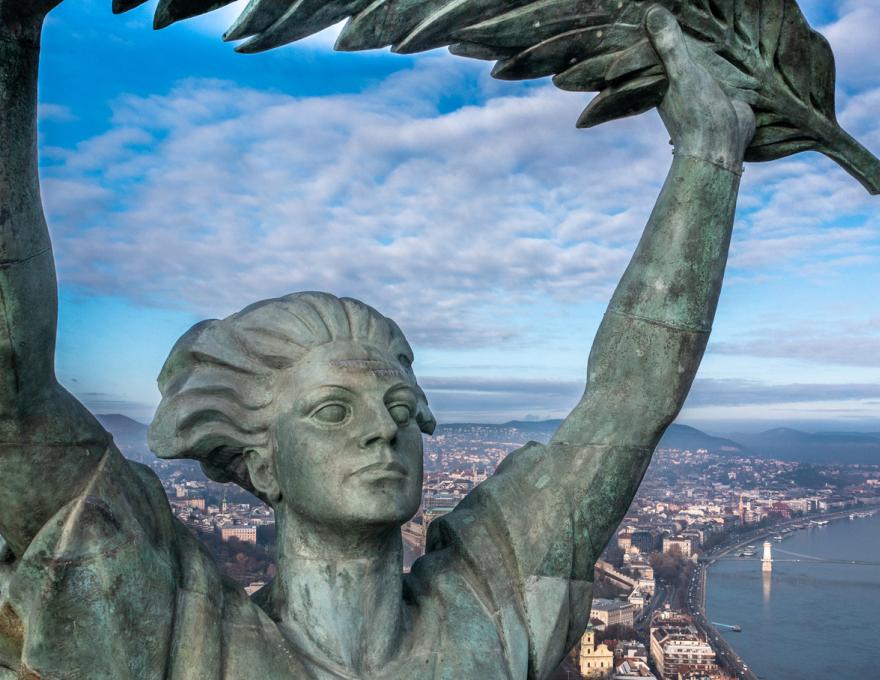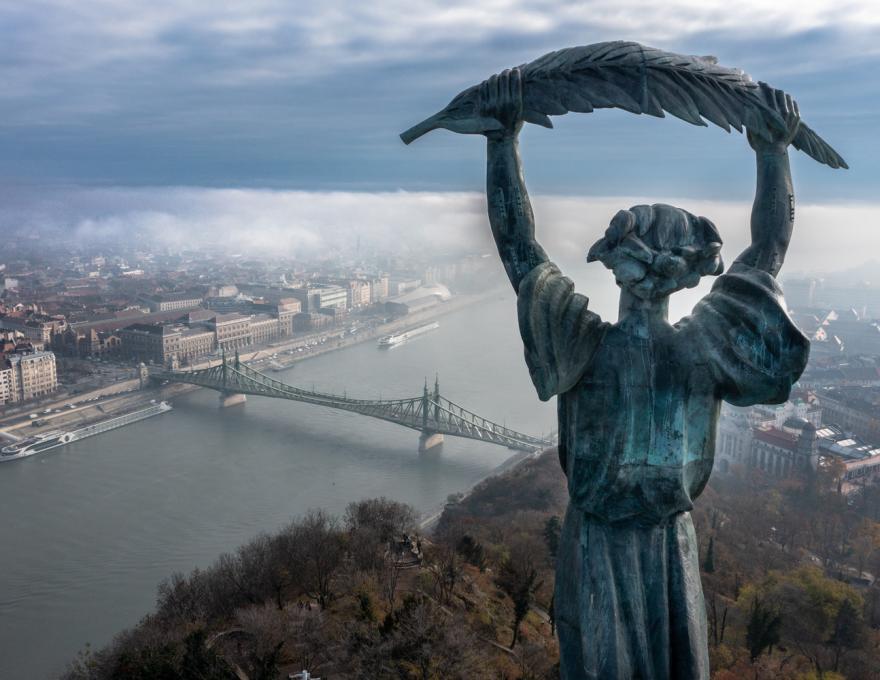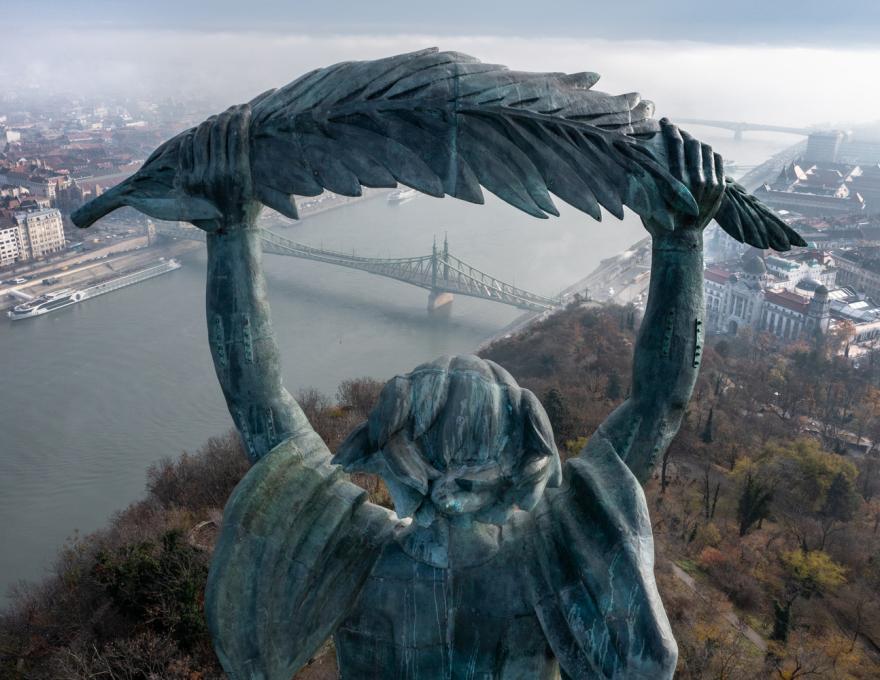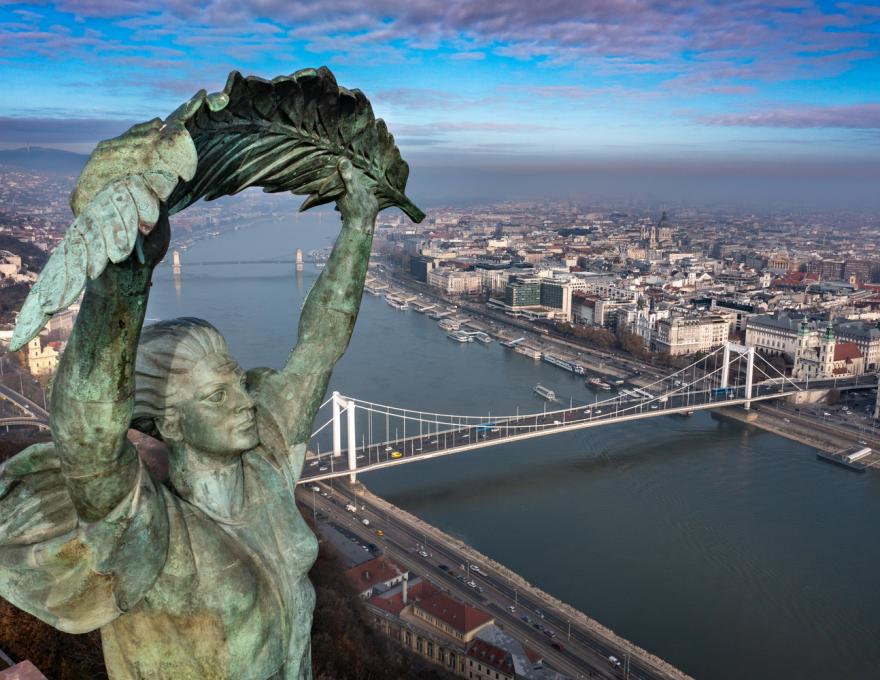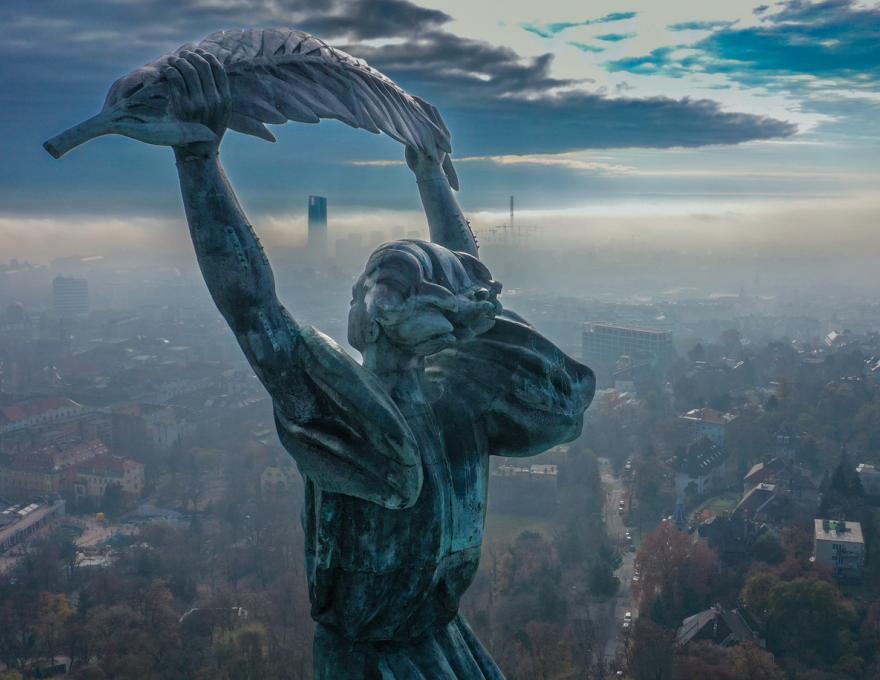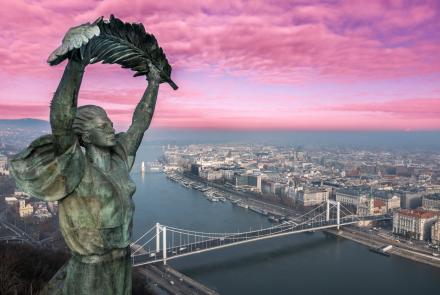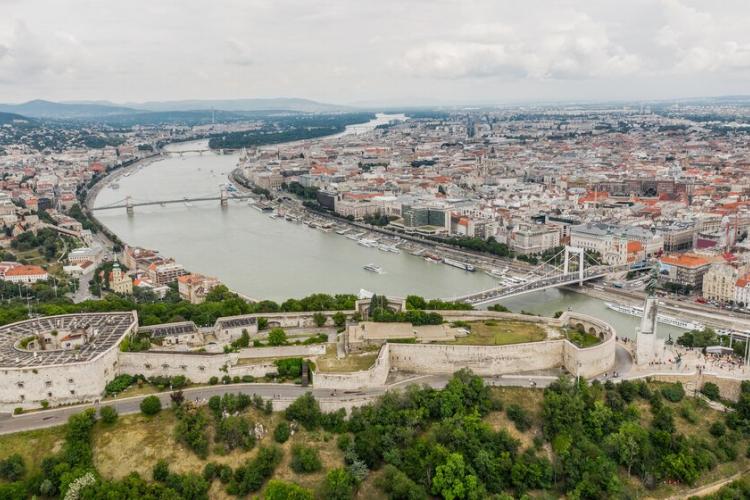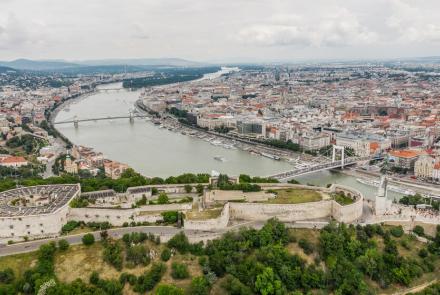The Liberty Statue is one of Budapest’s most iconic landmarks, standing atop Gellért Hill and visible from many points across the city. This monumental bronze statue symbolizes Hungary’s freedom and independence. Originally erected after World War II, it has since become a defining feature of Budapest’s skyline. The viewpoints surrounding the statue offer breathtaking panoramic views of the Danube River and the city.
Key Features:
Historical Significance
The Liberty Statue was erected in 1947 after World War II to commemorate the Soviet army’s role in liberating Hungary from Nazi occupation. It was designed by sculptor Zsigmond Kisfaludi Strobl and originally included an inscription honoring the Soviet forces. After the fall of communism in 1989, the dedication to the Soviet army was removed, and the statue was rededicated as a symbol of freedom and independence for the Hungarian people.
Impressive Size and Appearance
The statue depicts a 14-meter (46-foot) tall bronze female figure holding a palm leaf high above her head. With its 26-meter (85-foot) tall pedestal, the entire monument reaches a height of 40 meters (131 feet), making it one of Budapest’s tallest statues. Originally, the statue included two smaller side sculptures, symbolizing struggle and victory, which were part of the original Soviet monument.
Spectacular City Views
Standing at 235 meters (771 feet) above sea level, the Liberty Statue offers one of the best panoramic views in Budapest. From this vantage point, visitors can enjoy a stunning view of the Danube River, the Chain Bridge, the Parliament Building, Buda Castle, and many other landmarks. The view is particularly magical at sunset or when the city lights up at night.
Tourist and Cultural Importance
The Liberty Statue is one of Budapest’s most visited landmarks. The area is not only significant for those interested in history and monuments but also for nature lovers and hikers. Gellért Hill is home to several scenic trails and walking paths, making it a perfect spot for an outdoor adventure.
How to Get There
The Liberty Statue can be reached in several ways:
- On Foot: The most popular way is via one of the walking paths leading up Gellért Hill. From Gellért Square or the Szent Gellért embankment, it takes around 20–30 minutes to reach the top.
- By Public Transport: The nearest stop is Gellért Square, accessible by tram lines 47 and 49 and Metro Line 4. From there, you must walk up the hill.
- By Car: There are some parking spots near Citadella, but access by car is limited.
Visiting Tips
Opening Hours
The Liberty Statue and the surrounding viewpoints are open 24/7, as they are part of a public space.
Entrance Fee
Visiting the statue is free of charge.
Best Time to Visit
- Sunset or evening hours: The city lights create an unforgettable view, making it a perfect time for photography.
- Early morning: To avoid crowds, visit early in the morning when the area is quieter.
Nearby Attractions
- Citadella: A former military fortress on top of Gellért Hill, now a historical and tourist site.
- Cave Church (Sziklatemplom): A unique church built inside the rock of Gellért Hill.
- Gellért Thermal Bath: One of Budapest’s most famous thermal baths, dating back to the Austro-Hungarian Empire.
- Garden of Philosophers: A peaceful park featuring statues of historical figures such as Buddha, Abraham, and St. Francis of Assisi, offering another great panoramic view of the city.
Interesting Facts about the Liberty Statue
- The statue was originally planned to hold an airplane instead of a palm leaf, symbolizing technological progress. However, the design was changed before completion.
- After 1989, the political meaning of the monument was altered, and today, it represents freedom and independence instead of Soviet liberation.
- The Liberty Statue is prominently featured in the Hungarian film "Children of Glory" (2006), which depicts the 1956 Hungarian Revolution.
Visiting the Liberty Statue not only offers one of the best panoramic views of Budapest but also provides insight into Hungary’s history and its struggles for freedom. If you're in the city, this iconic landmark is a must-see!
